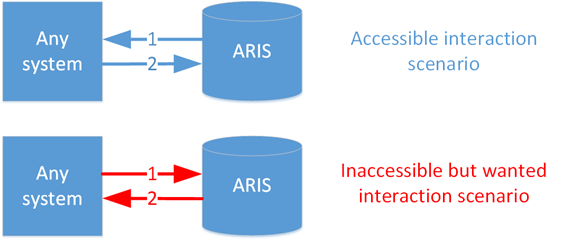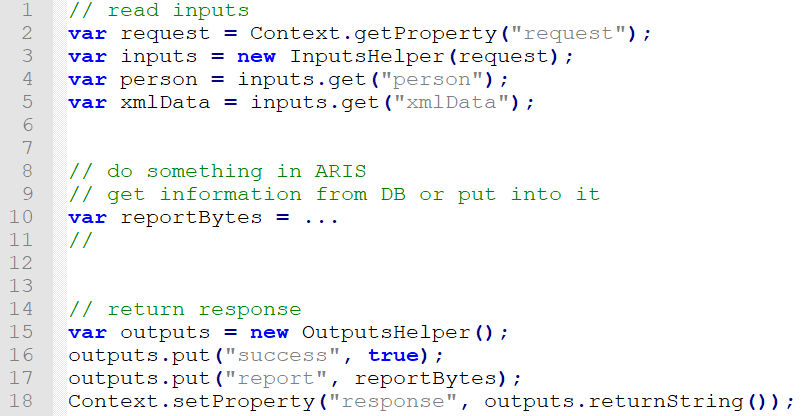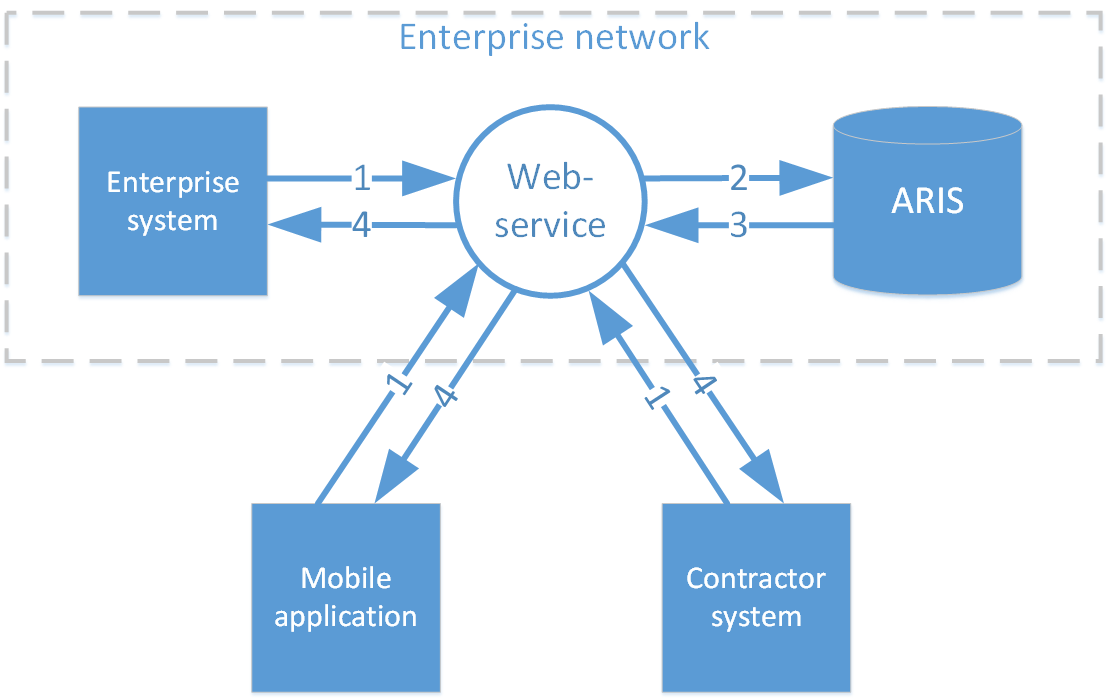The build-in ARIS capabilities of interaction with different systems include the utilization of two approaches: official ARIS API and scripts.
Official ARIS API provides limited opportunities for interaction but solves one of the most important tasks such as ARIS response to external requests. It is possible to get some raw information from ARIS databases using ARIS API. Each request to the REST API is a single transaction receiving discrete scattered and unprocessed information. If amounts of data are large, this mechanism may have significant delays in the system interaction and complex development outside of ARIS. Finally, this mechanism cannot be considered as the main one for non-trivial manipulations in ARIS.
In contrast, scripts are universal means of obtaining information from ARIS databases, processing and preparation for transferring data to other systems. This mechanism has the completest capabilities in terms of obtaining data or saving it in ARIS. However, the mechanism has also some drawbacks. The first drawback is the lack of ready-made solutions in ARIS for interactions with different systems. Speaking the language of programmers, there are no relevant libraries. The second significant drawback is that scripts can only be executed on the initiative of the ARIS user. The most attractive interaction scenario is a request from an external system to ARIS, its processing by scripts and sending a response. Scripts are powerful and ready-made mechanism, but because of the described drawbacks such scenario for work with them is not available.
Picture 1. Available and unavailable scenarios of ARIS interaction with other systems.
Dainova Consulting has developed a special Web service that provides interaction with ARIS and has the following benefits: script capabilities are used, and service is open for external requests. The interaction scenario is as follows (Picture 2): an external system sends a request to the Web service (1), the service runs the script in ARIS and transfers the request data there (2), the script prepares a response and transfers it back to the Web service (3), the Web service returns the response to the system that requested data (4).
Picture 2. Interaction scenario using Web service.
Thus, the Web service acts as a layer between two interacting systems, ensures the use of script capabilities, the handing the initiative of the script launches as well as the information transfer. The interaction is synchronous (there is no delay between request and response) and multithreaded (several requests can be processed at the same time). The object of a two-way transfer can be either a small text or entire files, even several files within a single request-response transaction.
For the convenient use of the Web service there are following artifacts:
- WSDL description of Web service and access to its functions.
WSDL description can be used for preparing an external system for interaction. The Web service and its WSDL description are universal for any platforms and programming languages used in external systems.
- Java library for integration with scripts in ARIS.
This library gives an opportunity to use any existing or newly developed scripts. The library makes the scripts an independent service with standardized inputs and outputs. For script developers this actually means adding a few lines of code:
Picture 3. Example of code.
- Examples of working with Web service when implementing in Java language on Java RE and Android SDK platforms.
Web service can be utilized as a provider of information from ARIS and, conversely, to provide data to ARIS for model generations, automated updating of object attributes, making other changes.
The solution is also mature in terms of ensuring the protection of the transferred information. The data transfer between the Web service and an external system is carried out under a secure HTTPS protocol using SSL. It also gives an opportunity not to be limited to interaction of systems within one contour of the information network. For example, it is possible to interact with the following architecture:
Picture 4. Example of interaction architecture.
The use of the Web service opens the way to full integration of ARIS with production systems and can also become a basis for the development of new useful ARIS-compatible solutions.
If you have interest, please ask questions, put comments or contact us and we provide you with more information





